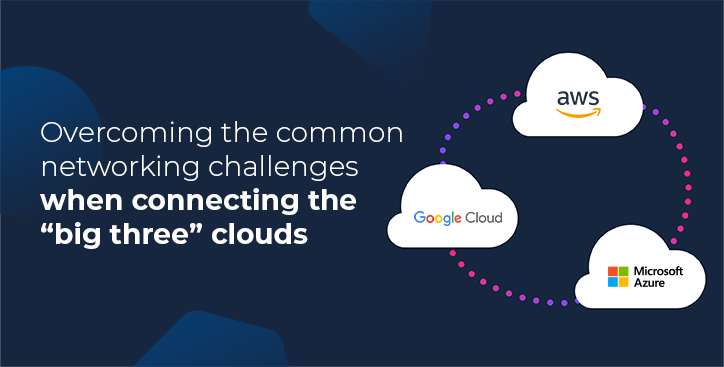Enterprises are increasingly opting for a multi-cloud portfolio, utilising different providers and services according to their strengths. This makes perfect sense, but how important is the inter-connectivity between these different cloud solutions?
The rise and rise of multi-cloud
Rapid growth in the uptake of enterprise public cloud services has created a highly competitive marketplace. AWS continues to reap the rewards of its early mover advantage, holding 40% of the global public cloud market and leading in every region. Microsoft and Google, coming in at second and third place respectively, hold 25% of the market between them – but they’re gaining ground on Amazon fast. Chinese players, like Alibaba, are also snapping up huge market share in their local region.
Competition is good for the customer because it drives innovation in service offerings and reduces cost. It also allows enterprises to avoid over-dependence on a single provider – a significant concern for many.
According to RightScale’s 2018 State of the Cloud report, 81% of enterprise-level businesses have already established a multi-cloud strategy. On average, companies were found to be using almost five public and private clouds in combination.
Multi-cloud strategies are designed based on the relative strengths of each offering, which vary greatly as providers seek to differentiate themselves from the competition. Let's take a closer look at the big three.
Amazon web services
Benefiting again from its market leadership, AWS's key strengths are the depth of its offering, its rich partner ecosystem, and its well-stocked marketplace. It also enjoys a solid reputation for openness, flexibility and configurability, along with being well suited to handling generalised workloads on a global basis.
Microsoft Azure
Microsoft Azure has obvious appeal to enterprises that are already significantly invested in the Microsoft ecosystem. Azure, as you would expect, integrates seamlessly with on-premises Microsoft systems.
Google Cloud
Of the three market leaders, Google is the least well established in the enterprise market. Still, it's a popular choice thanks to its straight-forward billing system, speedy connectivity, and impressive data analytics.
Google has also been recognised for its impressive capabilities in AI and machine learning – technologies set to become key enablers for the enterprises of tomorrow.
The need for interconnection
It’s clear that competition and differentiation are good for buyers of these services, and enterprises are right to pick and choose according to understood strengths and weaknesses. What they must address in tandem, though, is the network connectivity which links their premises to these multiple clouds, as well as their private clouds. A diverse cloud portfolio requires greater flexibility, scalability and configurability in connection. Without this, the benefits of a multi-cloud strategy might easily be squandered.
.jpeg)

.jpg)





.jpg)

